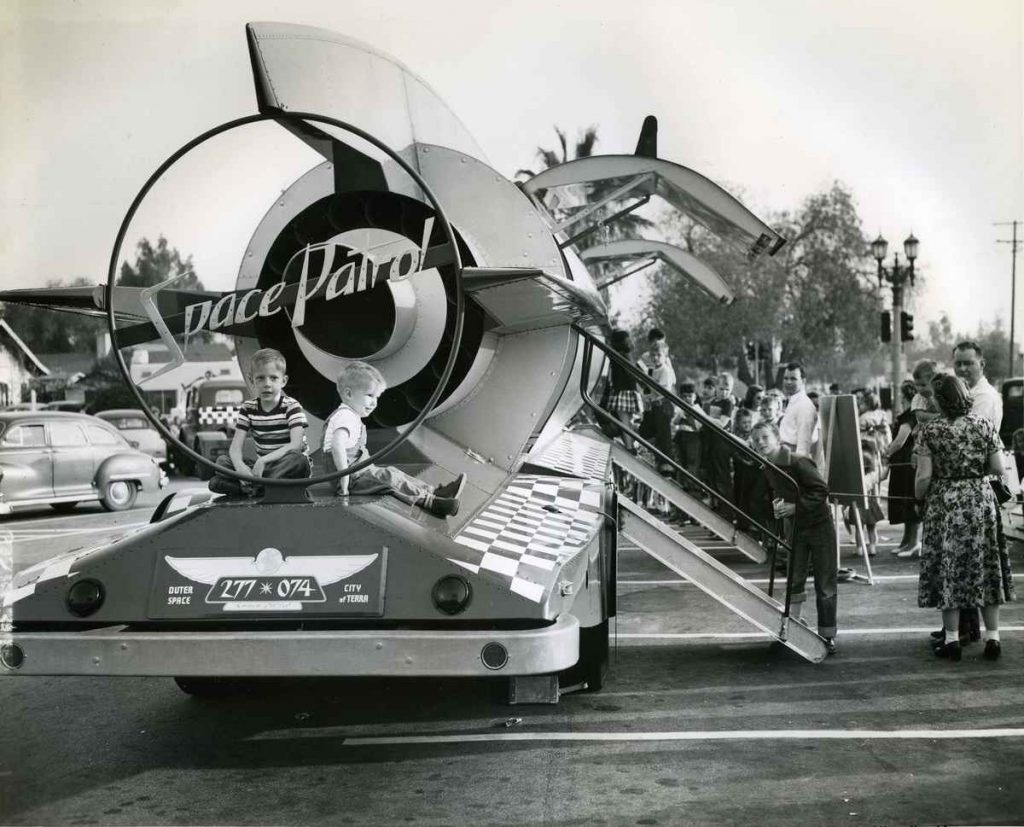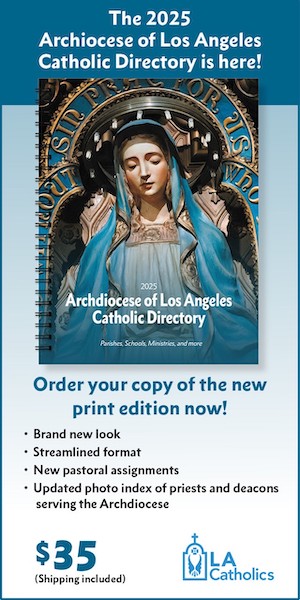“In the beginning was a flash of lightning. Two centuries ago, it was that flash of lightning that brought a creature back to life, in the laboratory of Dr. Frankenstein. While there were other creations of the fantastic, Mary Shelley’s work differed, for it was all brought about by science, with no hint of the supernatural.”
So begins a current exhibit at the Pasadena Museum of History. “Dreaming The Universe: The Intersection of Science, Fiction, & Southern California” runs through September 2.
By the early 20th century, science had advanced to the point that popular culture became inundated with stories of spaceships, robots and intergalactic explorers. Greater Los Angeles, with its aeronautics industry, film studios and creative zeitgeist, was a kind of epicenter for that culture.
The confluence of science and art met in such figures as mathematician-poet Eric Temple Bell and earthquake expert/sci-fi aficionado Charles Richter.
Pasadena’s Clare Winger Harris was credited as the first woman to publish under her own name in science fiction magazines. Edgar Rice Burroughs’ most famous creation gave the San Fernando Valley city of Tarzana its name.
Tracing the history of science fiction in Southern California from the 1930s to the 1980s, the exhibit is chock-full of artifacts, toys, graphic art, movie posters and stills, and vintage comic, paperback and magazine covers.
Startling stories (“The Glory That Was” and “The Last Days of Shandakor”); Marvel Science Stories magazine; Amazing Stories magazine; Race thrills! Eight-legged mounts!
It’s all here: marauding gorillas, enraged dinosaurs, scantily clad women and hyper-muscled he-men, “Forbidden Planet,” “Abbot and Costello Go to Mars.”
The Los Angeles Science Fantasy Society, founded in the 1930s, is the oldest continuous science and fantasy organization in the world. Its members met at downtown LA’s storied Clifton’s Cafeteria.
Don’t miss the group of lantern slides filmed, I’m guessing, also around the 1930s at Mt. Wilson’s Palomar Observatories. Formatted for home viewing, these “scientific souvenirs” depict planets, stars and night skies of haunting beauty.
The 1940s and World War II brought warfare, rockets, jet engines, bombs and radar to the forefront of the popular imagination.
The 1950s marked the advent of television, and shows like “Space Patrol” and “Captain Video.” Novels reflected the existential crisis of the nuclear age: “Out of the Unknown” (1948) by A.E. von Vogt and others (“Strange. Unusual. Startling. Bizarre.”); “The Dark Other” (1950) by Stanley G. Weinbaum.
Battery-operated made-in-Japan robots proliferated.
“Flight to Mars” (1951) was shot in Death Valley.
“Weird fiction” scion Emil Petaja, special effects wizard Ray Harryhausen and “Dean of Science Fiction Artists” Frank Kelly Freas are here.
So is Ray Bradbury (1920-2012), author of “Fahrenheit 451” and “The Illustrated Man,” among many others, arguably LA’s premier and most well-beloved science fiction writer.
There’s a wonderful technicolor photograph of his Wilshire Boulevard office, crammed with toy rockets, robots and cartoon figures. On display as well are a pair of his very cool black fat-rimmed eyeglasses and blood-red case.
By the 1960s, space exploration was in full swing. You can see Mr. Freeze’s helmet, worn by George Sanders in “Batman” (1966), an ape head, boots and molded shoulder pieces from “Planet of the Apes” (1968), and Colonel Tigh’s uniform, worn by Terry Carter in “Battlestar Galactica” (1978-1979).
A 1968 photo shows Caltech students noisily protesting the cancellation of “Star Trek.”
The 1980s science fiction writers Octavia Butler (“As Dream a Shadow,” “Parable of the Sower”), Harry Turtledove and Harry Brin are covered.
What really caught my imagination as I wandered through, however, were the human coincidences, paradoxes and bits of irony that mere science has never yet begun to plumb.
George Reeves, for example, played the most successful science fantasy figure ever created in the 1950s TV series “The Adventures of Superman.”
The commentary next to the costume worn by Ben Affleck in “Hollywoodland” (2006) cryptically notes that the film explores Reeves’ “mysterious death from a single gunshot wound.”
What! “It’s a bird! It’s a plane!” has been branded on my brain since my slack-jawed, binge-TV-watching youth. But I either hadn’t known, or had chosen not to remember, how Reeves had died.
He was shot in the upstairs bedroom of his Benedict Canyon home, it turns out, between 1:30 a.m. and 2 a.m. on June 16, 1959. He was 45.
He was also, it transpires, a drinker. Did his fiancée Leonore Lemmon, wildcat New York high-society gal and also a drinker, pull the trigger?
Or did one of the three other partiers present that night, all of whom the police described as being in a state of “extreme inebriation” (and two of whom were having an extramarital affair)?
Or was Reeves’ death a suicide, brought on by depression that his Man of Steel typecasting had ruined him, in the studio heads’ minds, for other roles?
To this day, the mystery has never been solved. What we do know is that the man who was bulletproof on screen was brought down in real life by a bullet.
You can’t make this stuff up.

